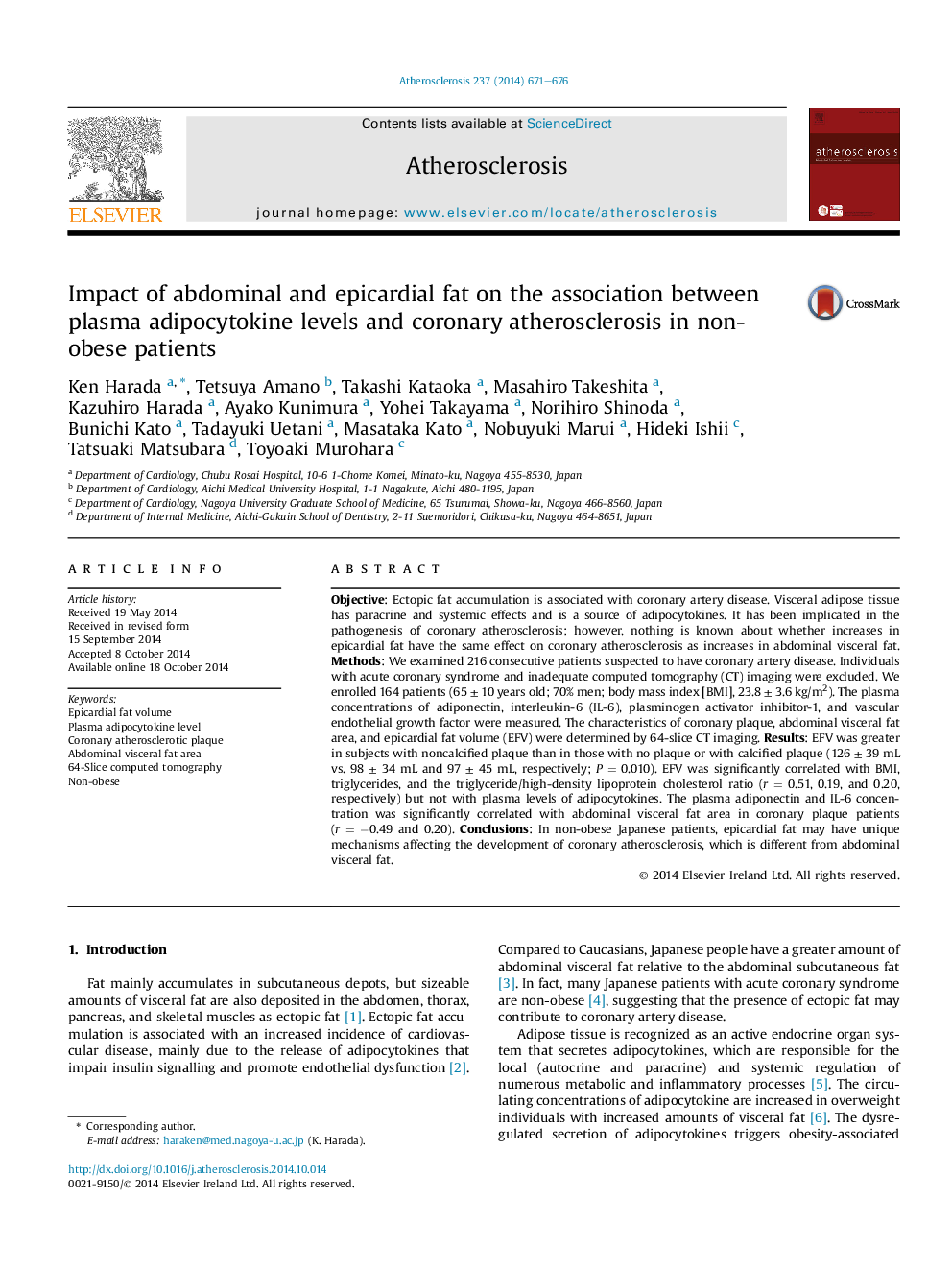| Article ID | Journal | Published Year | Pages | File Type |
|---|---|---|---|---|
| 5945381 | Atherosclerosis | 2014 | 6 Pages |
â¢There was no correlation between plasma levels of adipocytokine and epicardial fat volume (EFV).â¢Subjects with noncalcified plaque had increased EFV but their adipocytokine levels did not increased.â¢Adiponectin and IL-6 levels were correlated with abdominal visceral fat area in patients with coronary plaque.â¢Epicardial fat may promote coronary atherosclerosis directly through paracrine effects rather than systemic effects.
Objective: Ectopic fat accumulation is associated with coronary artery disease. Visceral adipose tissue has paracrine and systemic effects and is a source of adipocytokines. It has been implicated in the pathogenesis of coronary atherosclerosis; however, nothing is known about whether increases in epicardial fat have the same effect on coronary atherosclerosis as increases in abdominal visceral fat. Methods: We examined 216 consecutive patients suspected to have coronary artery disease. Individuals with acute coronary syndrome and inadequate computed tomography (CT) imaging were excluded. We enrolled 164 patients (65 ± 10 years old; 70% men; body mass index [BMI], 23.8 ± 3.6 kg/m2). The plasma concentrations of adiponectin, interleukin-6 (IL-6), plasminogen activator inhibitor-1, and vascular endothelial growth factor were measured. The characteristics of coronary plaque, abdominal visceral fat area, and epicardial fat volume (EFV) were determined by 64-slice CT imaging. Results: EFV was greater in subjects with noncalcified plaque than in those with no plaque or with calcified plaque (126 ± 39 mL vs. 98 ± 34 mL and 97 ± 45 mL, respectively; P = 0.010). EFV was significantly correlated with BMI, triglycerides, and the triglyceride/high-density lipoprotein cholesterol ratio (r = 0.51, 0.19, and 0.20, respectively) but not with plasma levels of adipocytokines. The plasma adiponectin and IL-6 concentration was significantly correlated with abdominal visceral fat area in coronary plaque patients (r = â0.49 and 0.20). Conclusions: In non-obese Japanese patients, epicardial fat may have unique mechanisms affecting the development of coronary atherosclerosis, which is different from abdominal visceral fat.
